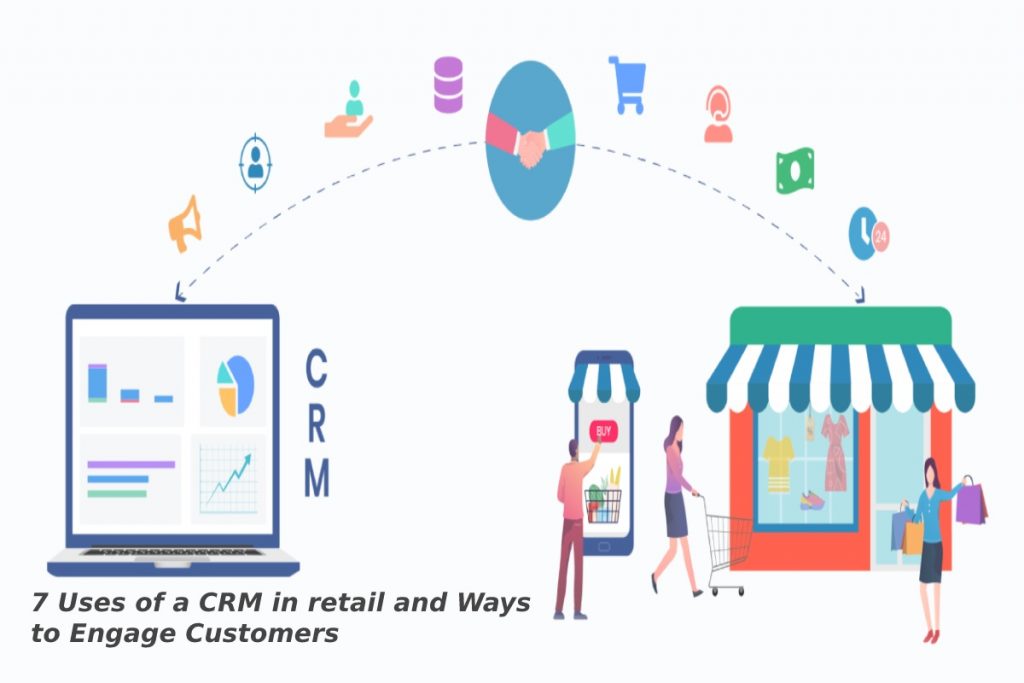Table of Contents
CRM in Retail
CRM in retail – Retailers must repeat store visits and build brand loyalty to increase sales eventually. And the key to achieving this goal is improving customer relationships. But how do you capture a customer’s attention when the challenges in the retail industry are numerous?
- Competition in the retail industry is expanding as customer demands multiply. Therefore, companies are exploring omnichannel strategies to deliver relevant, customer-centric experiences to retain them.
- Without using technology, running a business is another problem. Not having up-to-date information, submitting product offers after a customer has already purchased it, and other such errors can be risky.
- The current COVID-19 pandemic has made consumers embrace online shopping more than ever. Retail companies are rushing to improve online shopping experiences and up their game to stay in business.
What are Some Ways to Engage Customers with your Business?
Try to do this:
- Keep studying market trends and make changes to the way you run your business.
- Collect regular feedback and improve customer experiences.
- Add new products and services to your business.
- Use technology. Install customer relationship management (CRM) software and watch your business transform. A good CRM can
- Break down silos to integrate customer data and get a unified view.
- Help you analyze customer experiences from the main stage.
- Create custom solutions based on the above.
This blog talks about the importance of CRM in retail companies. So if you own a retail business or plan to start one, read on!
Having a CRM system in retail is a huge benefit in itself, and integrating it with third-party applications is a bonus. Many companies use various software and application systems to run their business.
If you integrate your CRM with third-party applications, you will have consolidated information, and that makes your job easier.
Benefits of CRM in Retail
One of the most important benefits of CRM software is automation. Regardless of the type of business you own, the last thing you want to do is manually enter and manage customer data. By hand, schedule appointments, by hand create sales agreements, and by hand report customer issues. Doesn’t it get frantic, especially if you have a retail store? Collecting and entering customer information manually on a computer can be tedious.
In such a situation, CRM can save you time. By integrating your website with a CRM in your online retail business and using CRM-enabled PoS systems in retail stores, you can automatically store and manage data. This saves you time to focus on other essential business tasks.
Sending promotional offers to prospects and clients is fine, but is it okay to send them aimlessly offers? Will they even open your messages? What if your mailbox thinks your promotional emails are spam?
Whether you have an online or offline retail store, you need to know customers’ interests and buying habits to send them relevant promotions. The information a CRM stores can give you insight into the interests of your prospects and customers, helping you produce personalized offers.
Retargeting is the strategy of getting store or website visitors back after they have left without buying. It works by keeping track of all visitors.
Similarly, to prevent visitors from leaving your website, you can show them personalized pop-ups and offers to make them buy. For example, research says that 92% of first-time visitors don’t buy. To earn their interest and make them believe, you can offer them a special first-time discount.
With a CRM, you can save relevant purchase information about your visitors and buyers and make retargeting more effective than ever.
Customer feedback is vital to improving your business and therefore improving customer experiences. If your customers are happy online or offline, is there anything that can stop your business from growing? And what better than a CRM system to collect feedback and act on it?
Conclusion
If you have an online store, you can submit feedback forms or surveys and collect customer feedback. Also, for example, in Vtiger CRM, you can integrate with social channels like Facebook and allow customers to express their problems, which go directly to the CRM.
On the other hand, you can provide feedback forms at the check-in counter in a brick-and-mortar store and get feedback from your customers.
